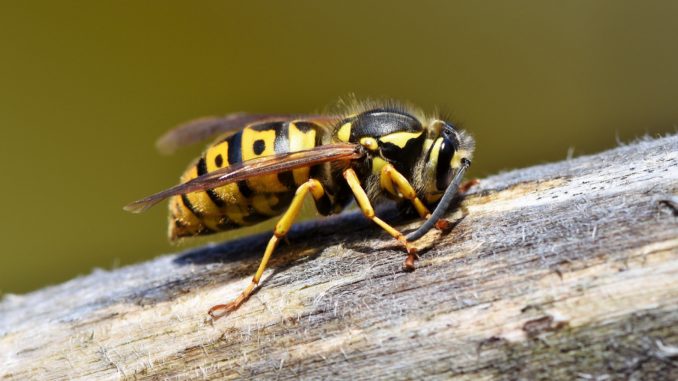

Shannon Moreau | Fort Collins Nursery
Usually, when you think of a wasp the first thing that comes to mind is a black and yellow insect with a tapered body and wings that will cause pain! However, wasps are actually an incredibly diverse family that we can live alongside after understanding who is our usual nuisance pest and who is not.
The majority of wasp species are solitary, and while many of these wasps have fearsome appearances, they are usually harmless unless you are in their space or getting too close by handling them. Some examples of solitary wasps are pollen wasps which are important for pollination, and parasitic wasps which can control many insects that can cause issues if left unchecked (including Japanese beetle grubs!). If these do sting it is less painful than the stings of social wasps. Plain and simple wasps are important for keeping the balance in our ecosystems and have gotten a bad rap from a very small number of individual species.
The wasps that are considered pests are hornets, paper wasps, and yellowjackets, with painful stings that can occur multiple times. Each of these are social wasps, meaning they live in colonies that can house dozens by mid-summer and will sting when defending their homes. While paper wasps are predators of many other insects and can be beneficial to your garden, the western yellowjacket is the most well-known nuisance wasp. They are scavengers. When scavenging, they eat dead insects and garbage and are well known for invading picnics and outdoor spaces to consume our food!
If you do need to control your social wasp populations in common areas, seal up any gaps in outdoor spaces early in the spring that are ideal for paper wasps, such as small openings to cavities in structures. Western yellowjackets can be controlled mid-late summer by using a wasp trap. These traps do not attract paper wasps or hornets. If you find a nest that is causing a problem in a communal space, destroying it is another way to control its population. A direct, continual blast of water from a hose will dislodge nests, or you can use an insecticide. Apply an insecticide specially formulated for social wasp nests, these typically are a spray with a long-range which lets you be a safe distance away from the nest. It is crucial to spray these insecticides late in the evening or early in the morning before they become active. If you are stung, seek medical attention–whether that is a first aid kit to clean the site or a medical professional in case of severe allergy–and take a breather. These stings can be very painful!
If the nest is in a spot that is not a troublesome area, wait until late fall to remove the now empty nest. If the nest is far away from locations you will be spending time in, it is good to leave these wasps alone–remember they are part of our ecosystem.
Support Northern Colorado Journalism
Show your support for North Forty News by helping us produce more content. It's a kind and simple gesture that will help us continue to bring more content to you.
BONUS - Donors get a link in their receipt to sign up for our once-per-week instant text messaging alert. Get your e-copy of North Forty News the moment it is released!
Click to Donate
